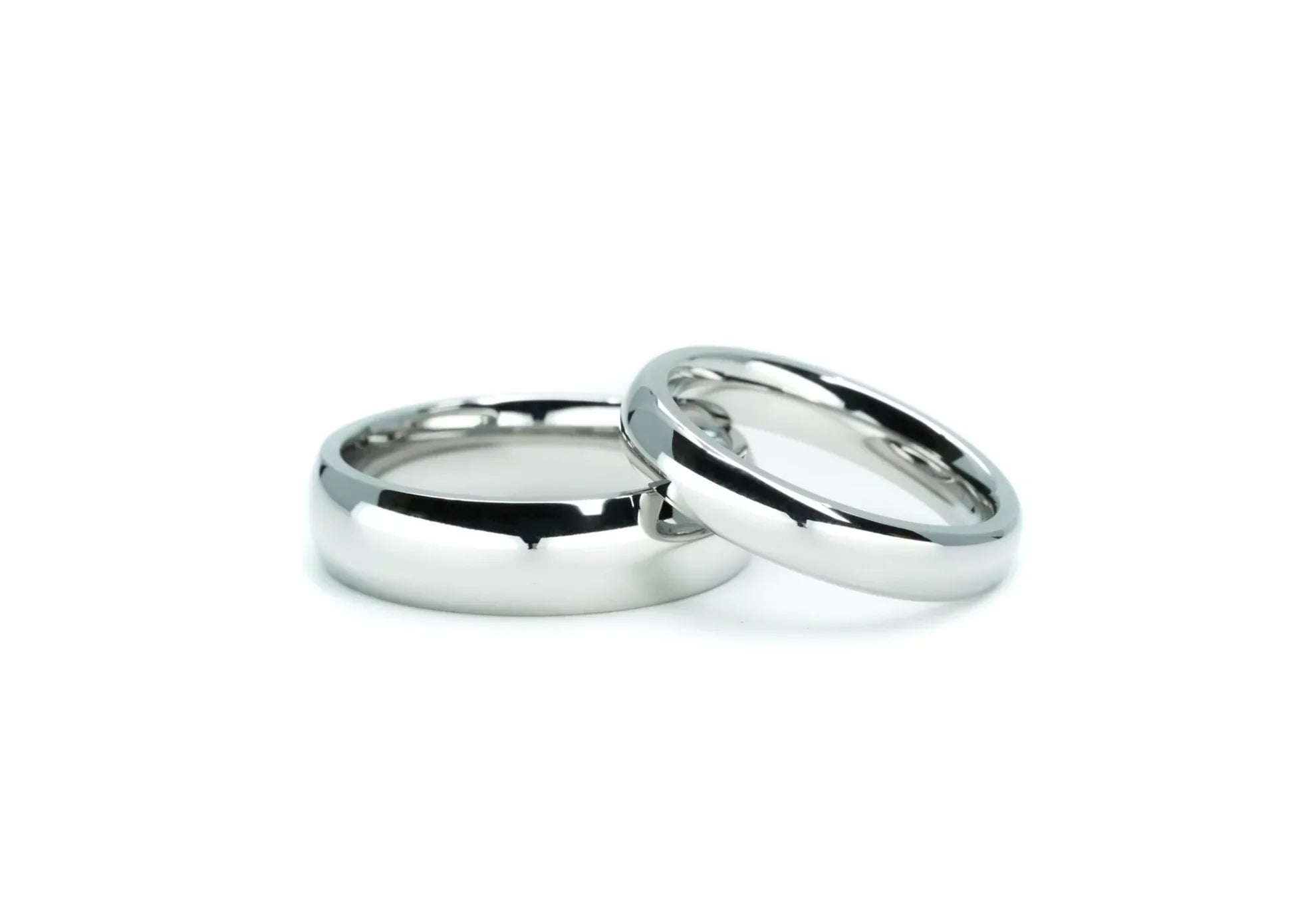Matching Metals: Should You and Your Partner’s Rings Be the Same?
Wedding rings may be symbols of unity, but that doesn’t mean they have to look identical. In fact, one of the most frequently asked questions we hear at Diamond Lab is this: Should we choose matching rings, or is it okay to each go our own way?
If you’re wondering how to approach this decision, you’re not alone. Whether you’re a couple who shares everything or two individuals with distinct aesthetics, this guide will help you understand the pros and cons of matching metals — and how to design rings that reflect your bond without compromising your style.
1. The Tradition of Matching Wedding Bands
Historically, matching rings were seen as a sign of commitment and unity. In many cultures, couples would choose identical bands — same metal, same width, same finish — as a symbol of shared values and partnership.
But modern couples are rewriting the rules.
Today, it’s less about conformity and more about personal expression. And with more materials, colours, and customisation options available than ever before, there’s no longer a “right” answer.
2. Reasons to Match Your Ring Metals
Aesthetic Harmony
Matching metals (like both choosing 18K yellow gold) can create a beautiful visual symmetry — especially in wedding photos. This is ideal if you both already love the same look or wear similar tones in your daily jewellery.
Symbolic Meaning
For some couples, matching wedding bands represent equality and shared values. A coordinated pair may feel more meaningful if you want a strong sense of unity in your design.
Ease of Decision-Making
Choosing the same metal can streamline the process, especially if you’re ordering rings together or creating a set from the same collection.
3. Reasons Not to Match
Different Skin Tones and Preferences
Not everyone looks their best in the same metal. For example, yellow gold may complement one person’s warm skin tone beautifully, while white gold or platinum flatters cooler undertones.
Different Lifestyles
Maybe one of you works with your hands daily and needs a more durable metal like platinum, while the other prefers the romantic hue of rose gold. Choosing different metals allows each partner to prioritise comfort and practicality.
Creative Expression
Your ring should be a reflection of you. Some couples express their individuality by choosing contrasting metals, widths, finishes, or even design styles — while still incorporating a subtle link or matching detail to honour the connection.
4. Stylish Ways to Coordinate Without Matching Exactly
If you love the idea of unity, but want to keep your own style, consider these compromise ideas:
-
Use the Same Finish: For example, both rings can have a matte or brushed surface, even if the metal differs.
-
Incorporate Shared Details: Add an engraving, a shared gemstone, or a similar band profile for cohesion.
-
Reverse Metals: One of you could wear rose gold with a white gold inlay, and the other white gold with a rose gold inlay.
-
Custom Designs With a Common Theme: Collaborate with Diamond Lab’s design team to create a pair of rings that share a motif, pattern, or engraving — unique yet connected.
Explore design options through our Custom Jewellery Design service, where you and your partner can craft meaningful rings from scratch.
5. Most Popular Metals for Wedding Rings in Australia
If you’re still unsure which metal you’re drawn to, here’s a quick overview of what Australian couples are choosing in 2025:
-
18K Yellow Gold: Timeless, traditional, and warm.
-
18K Rose Gold: Romantic, soft, and modern.
-
18K White Gold: Sleek, versatile, and popular for minimalist styles.
-
Platinum: Durable, naturally white, and hypoallergenic — often chosen for men’s bands or high-wear lifestyles.
-
Two-Tone: A combination of metals in one band — perfect for couples who want contrast with connection.
See our Men’s Rings and Women’s Wedding Ring collections for ideas across every style.
6. Real Couples, Real Styles
At Diamond Lab, we’ve worked with countless couples who made different choices — and all of them were the right ones.
Some opt for matching platinum bands with subtle engraving inside. Others choose wildly different designs — like a rugged matte white gold band paired with a delicate pavé rose gold ring — but still include a meaningful touch that unites them.
The truth is: matching metals don’t define your love. The process of choosing together, respecting each other’s preferences, and celebrating your bond — that’s what matters.
7. FAQ: Matching Metals and Custom Bands
Do wedding rings need to match?
Not at all. Many couples choose rings that reflect their unique styles. Matching is a personal choice, not a rule.
Can we match part of the ring without making them identical?
Absolutely. You can match one detail (metal, width, finish, engraving) and still keep the overall design unique.
Is it possible to match rings if one of us has a metal allergy?
Yes — we offer hypoallergenic options like platinum and can adapt styles to suit sensitivities while preserving shared design elements.
Can we customise our rings later if we change our minds?
Yes, Diamond Lab offers resizing, re-finishing, and even design adjustments for future anniversaries or upgrades.
Final Thought: Celebrate Your Connection, Your Way
At the end of the day, your wedding rings should make you feel something. Whether that’s a sense of perfect symmetry or the joy of individuality, the choice is yours.
At Diamond Lab, we believe in love that’s personal — and jewellery that tells your story. Let us help you create a set of rings that honours your bond in the way that feels most meaningful to you.
Ready to begin your journey together?
Explore Custom Wedding Ring Design or book a Showroom Consultation to view options side by side with your partner.



Share:
Wedding Bands for Men: A Complete Style & Material Guide
Why More Australians Are Choosing Lab Diamond Wedding Rings